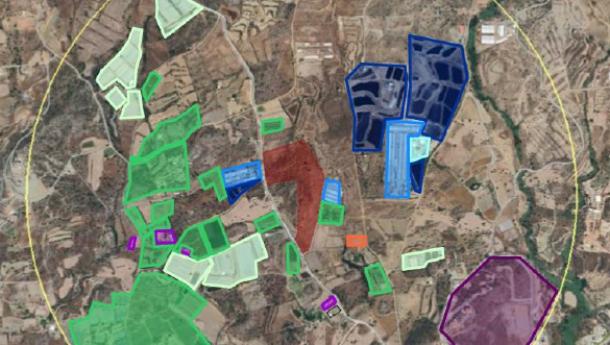The Cyprus Department of Environment has rejected a project proposal for the construction of a 5.32 MW photovoltaic park planned by Mezia Ltd in the Monagroulli community of the Limassol district.
The refusal was not due to the site being located in a protected natural area but because a significant portion of the land is unsuitable for installing solar panels. The terrain slope exceeds 25%, making equipment installation unsafe and technically challenging.
How the Environmental Assessment Took Place
The project was reviewed on May 6, 2025, during a meeting of the Environmental Impact Assessment Committee.
During the review, the Game and Wildlife Service requested a 3D visualization of the planned panel layout, which was later submitted on July 10, 2025.
Based on the submitted data, the opinions of committee members, and the findings of the Environmental Impact Assessment Report, the environmental authority concluded that the project does not meet safety and sustainability requirements.

Terrain Challenges and Ecological Impact
The project area features complex topography, especially in its central and northern parts.
If designers avoided installing panels on steep slopes, the configuration of the solar park would become fragmented, complicating both technical connections and maintenance operations.
To implement the project, large-scale earthworks would have been necessary — leveling slopes and preparing the soil — which would lead to serious disruption of the local ecosystem.
Additionally, rare plants and trees grow on the site. The plan called for cutting down 13 olive trees, 4 pines, 4 acacias, and one fig tree to make space for the panels.
Ecology vs. Energy: The Search for Balance
The refusal to approve the solar park highlights that Cyprus aims to expand renewable energy but not at the expense of natural ecosystems.
The country continues to promote solar projects on suitable land with minimal environmental impact, particularly in areas with low biodiversity.
Experts note that such decisions help maintain a balance between energy development and the preservation of natural heritage.
In the coming years, new design standards for photovoltaic parks are expected to be introduced to combine green energy production with the protection of agricultural land and wild flora.
